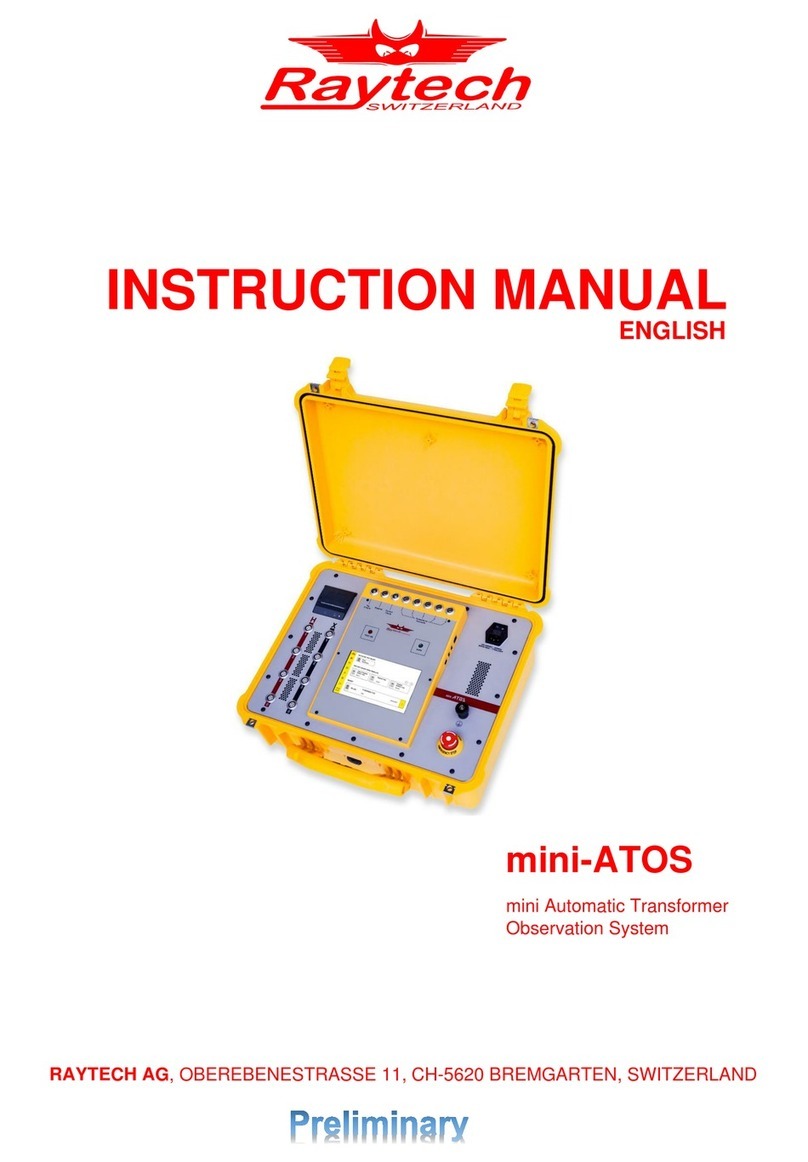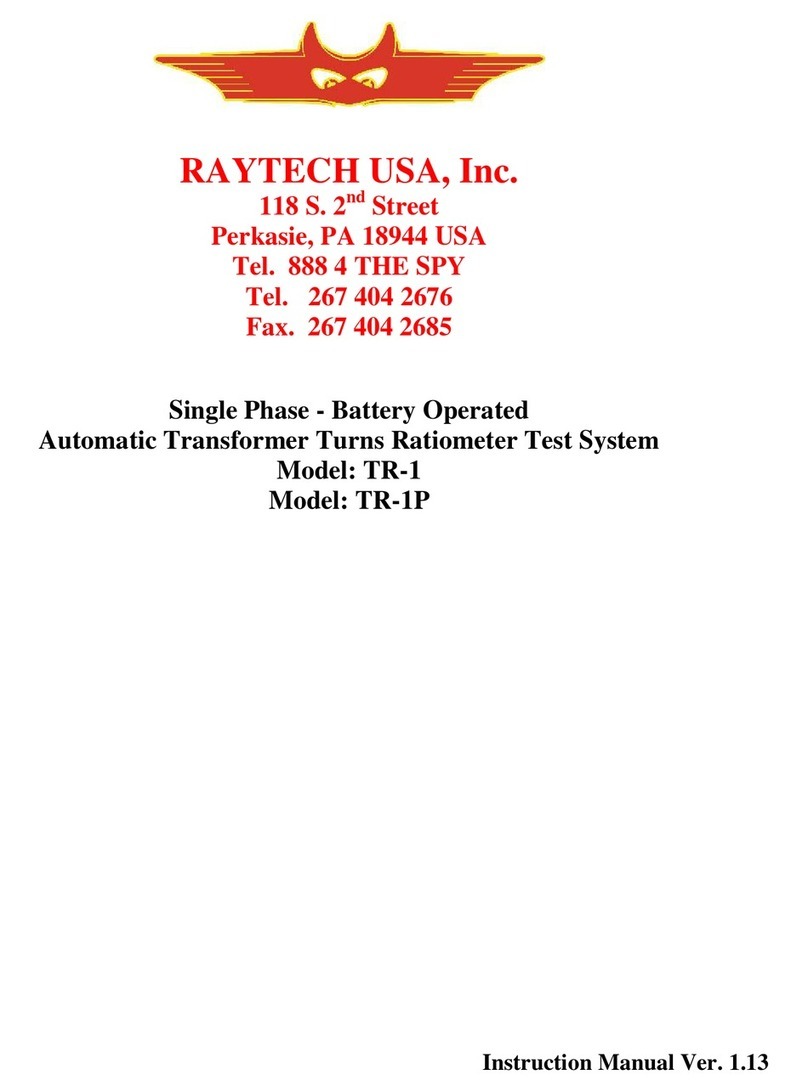Instruction Manual TR-Mark III 250V Version 1.10 Preliminary Page 2 of 57
TABLE OF CONTENTS
1 Safety Precautions......................................................................................................................................... 3
2 Unpacking...................................................................................................................................................... 4
3 Introduction.................................................................................................................................................... 5
3.1 History.................................................................................................................................................. 5
3.2 General................................................................................................................................................. 5
3.3 Advantages & Features........................................................................................................................ 6
3.4 System Details...................................................................................................................................... 7
3.4.1 System Check:................................................................................................................................. 7
3.4.2 Transformer Turns Ratio Testing:.................................................................................................... 7
3.4.3 Transformer Turns Ratio Meter uses:.............................................................................................. 8
3.4.4 Limitations of Turns Ratio Testing: .................................................................................................. 8
4 Quick Start Guide........................................................................................................................................... 9
4.1 Instrument operation............................................................................................................................. 9
4.2 Connection to Test Object.................................................................................................................. 10
4.2.1 Hooking up a transformer .............................................................................................................. 10
4.2.2 Comparison of International Standards ......................................................................................... 11
5 Operation Elements ......................................................................................................................................12
5.1 Front Panel Overview: ....................................................................................................................... 12
5.2 Control Elements and Connections .................................................................................................... 12
5.2.1 Fuse, Mains Input and Switch........................................................................................................ 12
5.2.2 Ground Terminal............................................................................................................................ 12
5.2.3 Emergency Off............................................................................................................................... 12
5.2.4 High Voltage Side.......................................................................................................................... 12
5.2.5 Low Voltage Side........................................................................................................................... 12
5.2.6 3 Phase Extension (T-REX)........................................................................................................... 13
5.2.7 External ......................................................................................................................................... 13
5.2.8 Interface......................................................................................................................................... 13
5.2.9 Safety Indicator.............................................................................................................................. 13
5.2.10 Display and Touch Panel .............................................................................................................. 13
5.2.11 Thermal Printer ............................................................................................................................. 13
6 Operation Elements Field Case ....................................................................................................................14
6.1 Rack: Front Panel Overview............................................................................................................... 14
6.2 Rack: Rear Panel Overview ............................................................................................................... 14
7 Transformer, Measurement and Data Structure............................................................................................15
7.1 Introduction......................................................................................................................................... 15
7.2 How it works....................................................................................................................................... 15
8 Operating Menu............................................................................................................................................17
8.1 Main Screen ....................................................................................................................................... 18
8.1.1 Operating on a simple screen, no Transformer Data entered........................................................ 18
8.1.2 Further Options of the Main Screen............................................................................................... 20
8.1.3 Operating on an advanced Screen, Transformer Data entered..................................................... 22
8.1.4 Taps............................................................................................................................................... 24
8.1.5 More Taps...................................................................................................................................... 26
8.1.6 Tertiary Winding System................................................................................................................ 27
8.2 New.................................................................................................................................................... 29
8.2.1 New Transformer........................................................................................................................... 30
8.2.2 Load from Archive.......................................................................................................................... 33
8.2.3 Copy Actual Transformer............................................................................................................... 34
8.2.4 New Measurement......................................................................................................................... 35
8.2.5 Working with Templates ................................................................................................................ 35
8.3 Info ..................................................................................................................................................... 36
8.3.1 Enter Tap Changer Data by Wizard............................................................................................... 38
8.3.2 Enter Tap Changer Data manually ................................................................................................ 38
8.4 Archive ............................................................................................................................................... 39
8.5 Setup.................................................................................................................................................. 40
8.5.1 General.......................................................................................................................................... 41
8.5.1 Operators....................................................................................................................................... 42
8.5.2 Standards ...................................................................................................................................... 42
8.5.3 Printer............................................................................................................................................ 42
8.5.4 Color.............................................................................................................................................. 42
9 Technical Specification .................................................................................................................................43
10 Interfaces......................................................................................................................................................45
10.1 Hardware............................................................................................................................................ 45
10.2 Raytech Toolbox................................................................................................................................. 46
10.3 TR-Mark III 250V Communication Port............................................................................................... 47
10.3.1 Hardware Protocol .................................................................................................................... 47
10.3.2 Software Protocol...................................................................................................................... 47
10.4 TR-Mark III 250V Remote Commands ............................................................................................... 47





























